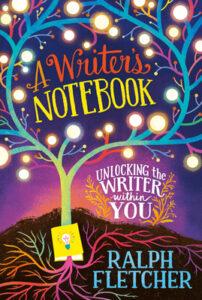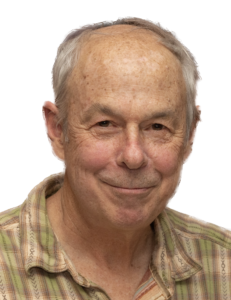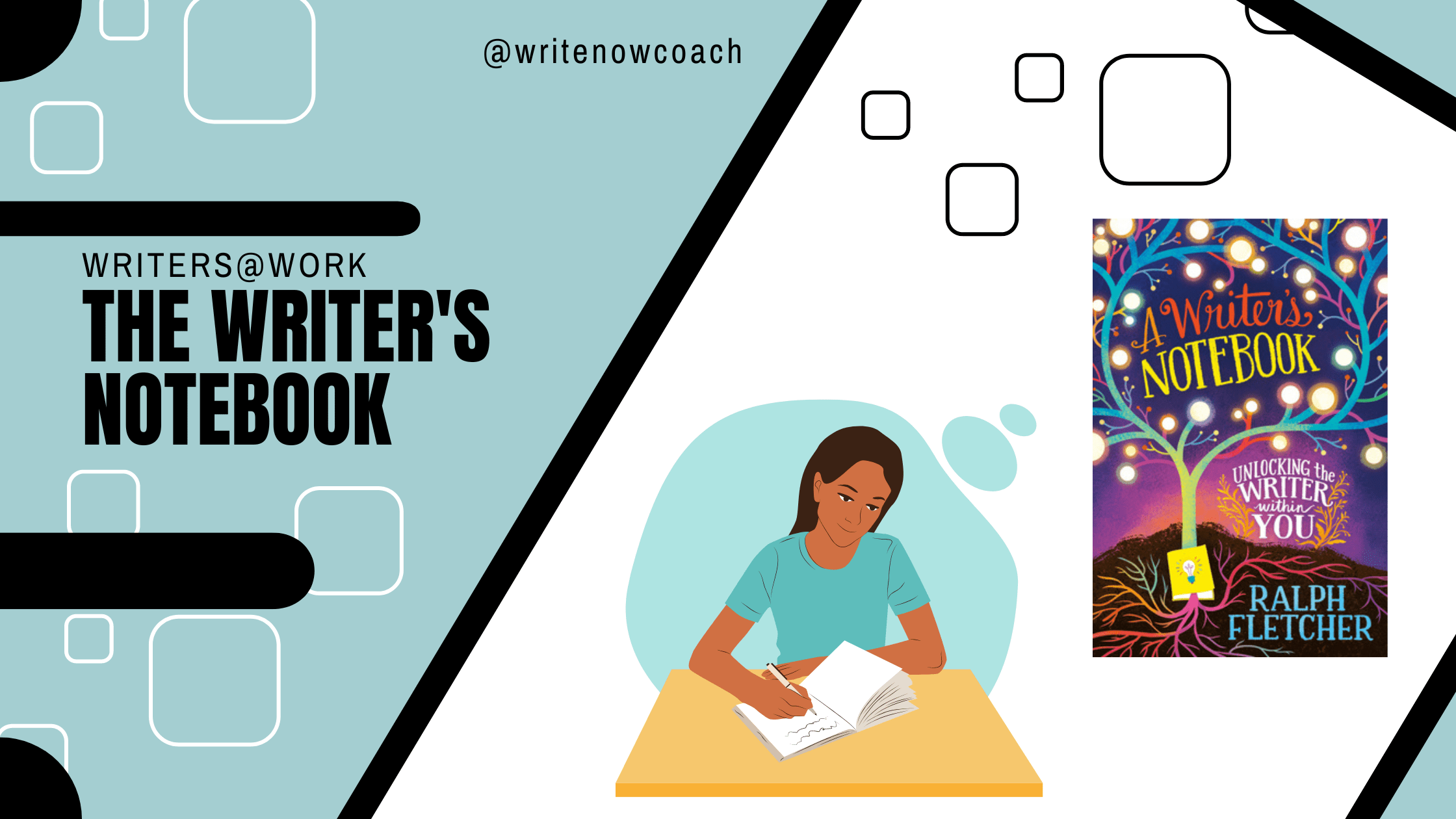The Writer’s Notebook
May 2, 2023
Note From Rochelle
Dear writers,
Welcome to May!
For my birthday month, I have a special for you. I’m offering my Writer Mentoring Package at its original price of just $587. That’s $100 off the current price. If you’re interested in signing up, please contact me by replying to this email—and I will send you an invoice.
I’m thrilled to welcome Ralph Fletcher to the blog to talk about his work as a writer. I’ve been reading and teaching Ralph’s books for years—so you can imagine how fun it was to meet him when he came to Milwaukee this spring. This interview gave me the opportunity to ask him my burning questions—and share his answers with you. Enjoy!
Happy writing,
Rochelle, the Write Now! Coach
Writers@Work: The Writer’s Notebook
An Interview with Ralph Fletcher
I am such a fan of your book, A Writer’s Notebook, and now you have a brand new edition of A Writer’s Notebook: New and Expanded Edition: Unlocking the Writer within You. Can you talk about this book and how you’ve updated it for today’s young writers?
 On the one hand, writing is still writing. A writer still works to write with an authentic voice that connects to the reader. A writer tries to employ telling details, and so forth. But it’s also true that the world is different in the digital world. I wanted to create chapters that explore what new challenges and opportunities are created by the digital world. Also, there’s a renewed emphasis on advocacy and social justice. I explore this idea in the new edition and show examples of how students have used writing to raise their voices, disrupt the old way, and reshape their world.
On the one hand, writing is still writing. A writer still works to write with an authentic voice that connects to the reader. A writer tries to employ telling details, and so forth. But it’s also true that the world is different in the digital world. I wanted to create chapters that explore what new challenges and opportunities are created by the digital world. Also, there’s a renewed emphasis on advocacy and social justice. I explore this idea in the new edition and show examples of how students have used writing to raise their voices, disrupt the old way, and reshape their world.
You have written for both educational and trade publishers. You’ve written nonfiction, picture books, and novels. Are you able to juggle multiple projects at once or do you tend to be a serial writer (one project after another)? What tools do you use to stay productive?
My creative spirit is going strong. I have lots of ideas for all kinds of writing projects. I don’t expect all of them to get published. I’m working on a chapter book with an audience of one—my 7-year-old-grandson. Each genre of writing brings a new challenge. But there is always a danger of being too scattered. Katherine Paterson once wrote that there is an “emotional core” at the heart of each book. A writer needs to find that. So I like to have one idea front and center—that’s the one that gets my attention. That’s the one I’m thinking about when I go to bed at night, or while I’m going through my day.
I’m not sure what “tools” keep me productive, but I have found that I’m most productive as a writer in the morning. “Write early, and write fast,” that’s why Don Murray used to advise. I have found wisdom in those words.
Also, I want to put in a plug for abandoning a project that isn’t going anywhere. We do that with a book that’s kind of a dud—and it’s okay to do that with a writing project too.
You’re writing and teaching about using photographs as writing prompts. How do you do that? And how has adding photography to your work inspired you and your writing?
Hmmm. It’s hard to distill that into a sound bite! Let me say that photography has helped me to hone my powers of observation. Every writer needs to learn to observe the world.
In my journey into photography, I’ve been surprised by the parallels between photography and writing. Each one is a composing process. You prewrite (prepare), write (take the photo), and revise (review). In each case you think of elements of craft (tension, point of view, surprise, detail), that will help to tell the story.
I wouldn’t exactly say “using photographs as writing prompts.” When we have done that in the past, we have often handed out photos that have nothing to do with our student’s lives. But I do think students can review their own photos (the ones they take on the phones), and claim their territory as writers. If you’re always taking photos of horses, well, that may suggest something to write about.
Do you keep a writer’s notebook? If so, what kinds of things do you put into it?
Absolutely! When I come to schools as a visiting author, I tell students: “My most important book is a book that has never been published, and never will be published.” I let them ponder this riddle and, if nobody guesses, tell them: my writer’s notebook. in my notebook I collect intriguing ideas, big and small. Sometimes I go back to one of those ideas, add to it, develop, water the seed, and nurture it until it becomes a finished writing project.
What are you reading now?
I’m reading American Dirt by Jeanine Cummings. Warning: the book contains some horrific scenes (particularly at the very beginning). When it first came out this book was praised by literary stars (Oprah, Stephen King, Julia Alvarez), but other writers criticized the book. There was a huge kerfuffle…charges of inauthenticity and cultural appropriation. I decided to read the novel to see for myself.
 About the author. Ralph Fletcher has written over fifty books for writing teachers and young readers. His books include: Fig Pudding, Flying Solo, Joy Write, Craft Lessons, What a Writer Needs, Focus Lessons: How Photography Enhances the Teaching of Writing, and Writing Workshop: The Essential Guide. His newest books are A Writer’s Notebook: Unlocking the Writer Within You (new edition) and “The World’s Loneliest Elephant,” a picture book illustrated by Naoko Stoop. Ralph visits schools and frequently speaks at educational conferences around the world, helping teachers find wiser ways of teaching writing. He has a passion for nature photography. Check out his website: https://ralphfletcherbooks.com/
About the author. Ralph Fletcher has written over fifty books for writing teachers and young readers. His books include: Fig Pudding, Flying Solo, Joy Write, Craft Lessons, What a Writer Needs, Focus Lessons: How Photography Enhances the Teaching of Writing, and Writing Workshop: The Essential Guide. His newest books are A Writer’s Notebook: Unlocking the Writer Within You (new edition) and “The World’s Loneliest Elephant,” a picture book illustrated by Naoko Stoop. Ralph visits schools and frequently speaks at educational conferences around the world, helping teachers find wiser ways of teaching writing. He has a passion for nature photography. Check out his website: https://ralphfletcherbooks.com/









